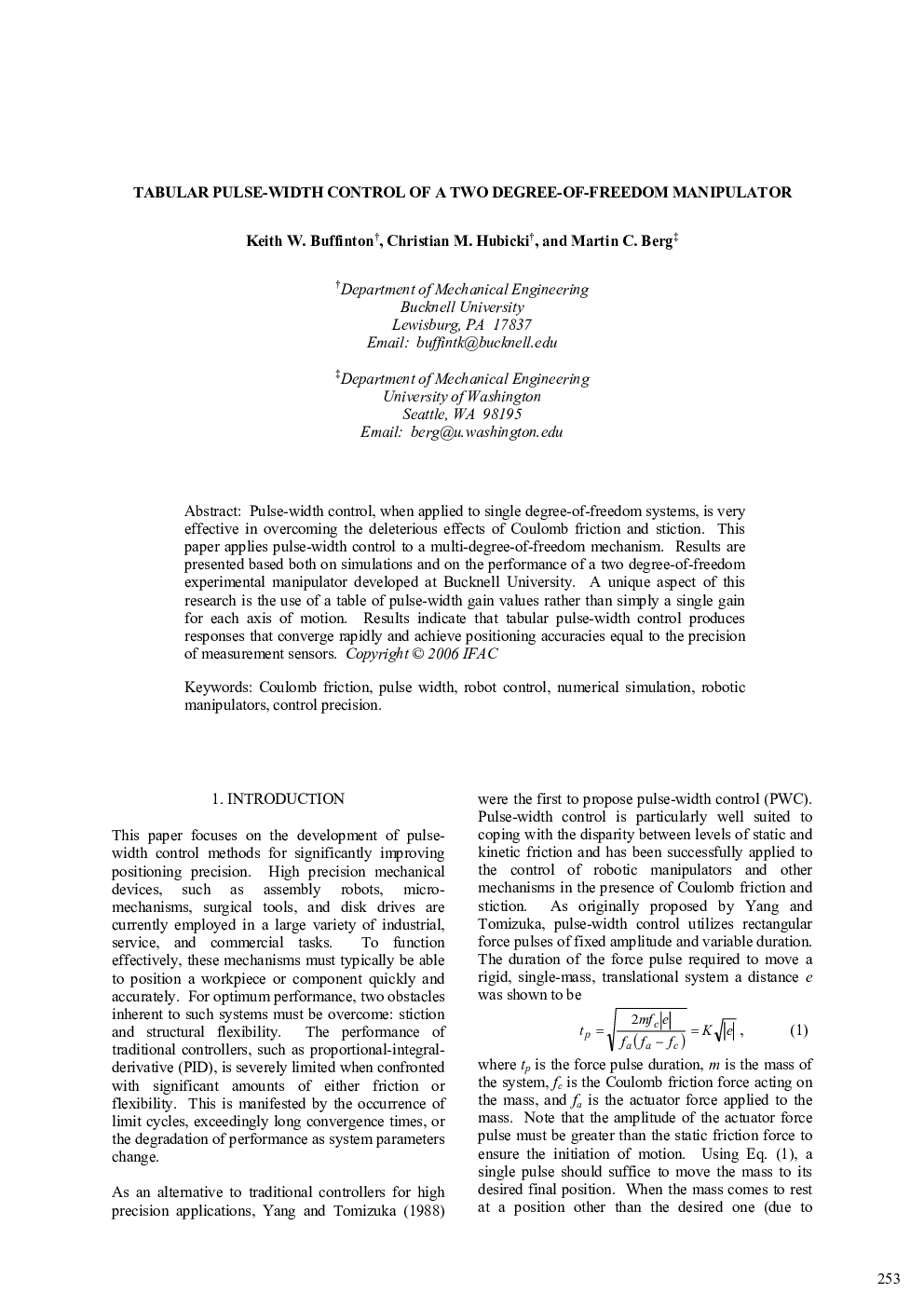| Article ID | Journal | Published Year | Pages | File Type |
|---|---|---|---|---|
| 721844 | IFAC Proceedings Volumes | 2006 | 6 Pages |
Abstract
Pulse-width control, when applied to single degree-of-freedom systems, is very effective in overcoming the deleterious effects of Coulomb friction and stiction. This paper applies pulse-width control to a multi-degree-of-freedom mechanism. Results are presented based both on simulations and on the performance of a two degree-of-freedom experimental manipulator developed at Bucknell University. A unique aspect of this research is the use of a table of pulse-width gain values rather than simply a single gain for each axis of motion. Results indicate that tabular pulse-width control produces responses that converge rapidly and achieve positioning accuracies equal to the precision of measurement sensors.
Keywords
Related Topics
Physical Sciences and Engineering
Engineering
Computational Mechanics
Authors
Keith W. Buffinton, Christian M. Hubicki, Martin C. Berg,
